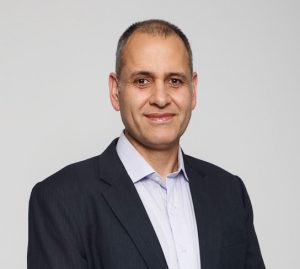Interview: Improving accuracy of lung cancer screening
Nir Peled, MD PhD, The Legacy Heritage Oncology Center & Dr. Larry Norton Institute, Soroka Medical Center & Ben-Gurion University, Beer-Sheva, Israel
Which biomarkers for early detection of lung cancer might play a role in the future?
Of course, smoking cessation is the goal in the setting of primary prevention, but once the patient is a smoker or ex-smoker, early detection should be promoted as much as possible. One of the current proven platforms for this purpose is low-dose computed tomography. However, it is our goal to add molecular biomarkers to this platform to improve specificity and even sensitivity. There is a range of promising biomarkers from different body compartments. We recently published a review covering all types of biomarkers including microRNAs, circulating tumor DNA, blood protein profiling, and also exhaled breath biomarkers [1]. The patient could breathe into a device or even talk over the phone, and at that time the volatile compounds could be detected based on chemical responses. This generates a signal that might alarm the patient to the possible presence of cancer and prompts clinical evaluation. However, at present, we have several platforms that mostly work based on markers obtained from the blood, such as a combination of tumoral biomarkers including protein and circulating DNA. Recently, it was shown that combining tumoral DNA and protein biomarkers gives rise to a very high sensitivity to support these efforts [2]
How can early detection of lung cancer be implemented even in poorer countries?
Early detection of lung cancer by low-dose CT is not only efficient, but it is also important to reduce expenses. When we detect lung cancer very early, we can skip the expenses related to the treatment of the advanced disease. Basically, I would say that poorer countries should go for screening even more than richer countries, because the costs of immunotherapies and the associated expenses are much higher than those of low-dose CT scans. However, there is still room for improvement with respect to reducing the number needed to screen to rescue one lung cancer patient. I would mainly focus on age to increase the pretest probability. Presently, it is recommended to screen from the age of 55 years in a patient with 30 pack years. If the bar would be raised to 60 years, especially in poorer countries, the expenses could be reduced. In my opinion, the age of 60 is the oldest cutoff for screening, because the average age at the time of lung cancer diagnosis is 67 years. Therefore, in poorer countries, 60 is a good cutoff that would increase the availability of screening for the patients who are in need of it.
REFERENCES
- Seijo LM et al., Biomarkers in lung cancer screening: achievements, promises, and challenges. J Thorac Oncol 2019; 14(3): 343-357
- Cohen JD et al., Detection and localization of surgically resectable cancers with a multi-analyte blood test. Science 2018; 359(6378): 926-930
More posts
Preface – ELCC 2019
Preface – ELCC 2019 Pilar Garrido, MD, PhD Head of the Thoracic Tumor Section,





